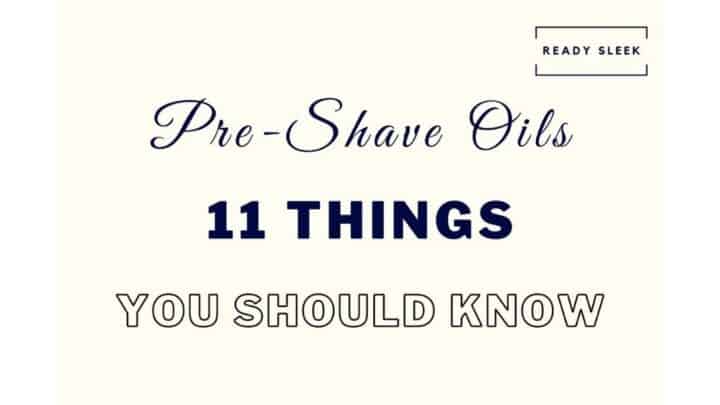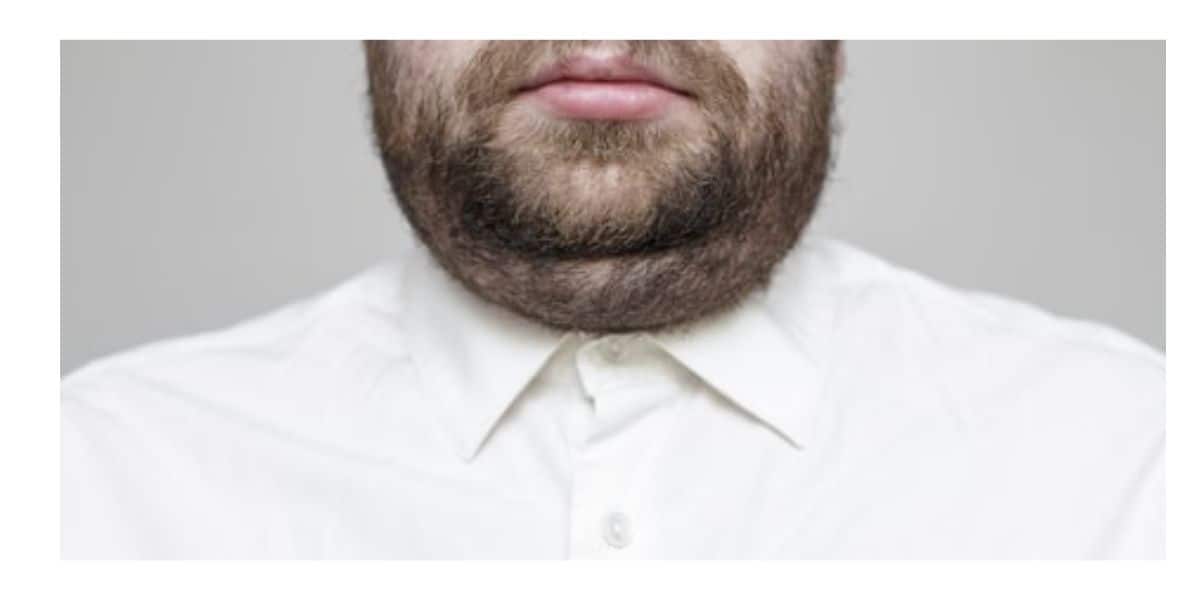There are few grooming tools as intensely masculine as this one. Although its concept is pretty simple in theory, many men have a poor understanding of pre-shave oils.
In order to fix this, you need to know what it is, what it’s for, why it’s useful and more.
That’s what we’re going through today: questions on pre-shave oils that are frequently asked but rarely answered properly.
Once this is over, you’ll be lathering on that good stuff like a bonafide expert.
Let’s get to it.
Note that the products mentioned in this article may not be suitable for your individual circumstances. If you have any queries or concerns regarding their suitability, seek professional advice.
1. What Is Pre-Shave Oil And What Does It Do?
Pre-shave oil is an oil that’s applied before shaving cream or gel to provide an additional layer of lubrication and protection during the shave.
It’s usually made of a mixture of carrier oils, essential oils, and vitamin oils. Carrier oils comprise the majority of it and examples include castor oil (common), sunflower oil, jojoba oil, and safflower oil.
It often leads to a smoother, more comfortable, and closer shave.
Although its benefits are pretty widely known, it’s usually only men who take shaving seriously that bother with it.
2. Who Should Use Pre-Shave Oil?
Pre-shave oils would be suitable for use by anyone looking for a closer and smoother shave, or those men looking to get into traditional shaving techniques.
Another group that should strongly consider using pre-shave oil are those men looking to get more serious with their shaving.
As much as some may find it strange, shaving is a genuine hobby to a lot of men. There’s just something great about traditional shaving techniques.
Scuttles, brushes, lather, straight razors, hot towels, etc. It’s a lost art that’s making a real comeback.
If you think shaving could be something you could get into, pre-shave oil should become an essential part of your routine.
3. Pre-Shave Oil Vs Cream Vs Gel: What’s The Difference?
Pre-shave oil is applied before cream or gel, providing an additional thin layer of lubrication. Unlike pre-shave oil, shaving creams and gels are thick and provide cushioning and heat retention for the shave.
Gels are more transparent than creams and so are favored by men who like to actually see what they’re shaving. In addition, gels are often seen as slightly more lubricating than creams.
4. Pre-Shave Oil Vs Shaving Soap: What’s The Difference?
Shaving soap is meant to be applied after pre-shave oil. Unlike pre-shave oil, when built into a lather, shaving soap is thick and provides cushioning and heat retention for the shave.
In that respect, shaving soap is similar to shaving cream and gel – it’s meant to be used after and in combination with a pre-shave oil.
5. Pre-Shave Oil Vs Shave Oil: Is There A Difference?
In general, there is no difference between “pre-shave oil” and “shave oil”. They both refer to the same thing; a lubricating and moisturizing pre-shave product that’s applied before the lather.
Although the terminology can be confusing, it’s important to understand what terms refer to the same things and what doesn’t.
Let’s quickly go through some of the big-hitters.
Pre-shave products:
“Pre-shave oil” and “shave oil” are the same thing. It’s applied before the lather and provides an additional layer of lubrication for the shave. However, it does not have enough cushion for the shave itself.
Lather:
The lather is formed by a thicker product that provides more cushioning and heat retention for the shave. Shaving creams, gels, and soaps are the common ones you need to know about.
Post-shave products:
Post-shave products are meant for use after the shave, as you’d expect. Aftershave balms and lotions are both popular options.
6. Do You Wash Off Pre-Shave Oil?
Pre-shave oil should not be washed off before shaving. It’s meant to form an additional protective barrier between the skin and the razor for a closer and more comfortable shave. Washing it off would be a waste.
Just like there wouldn’t be any logic in washing off the lather, the pre-shave oil is meant to stay on the skin until the shave.
Washing it off before the shave would be counterproductive and a waste of product and money.
7. Can You Use Pre-Shave Oil As Beard Oil?
Pre-shave oil shouldn’t be used as beard oil.
It isn’t its intended use.
In addition, because beard oil is generally more viscous than pre-shave oil it’s quite likely to eventually clog the blade. It’s generally best to use pre-shave oil as pre-shave oil and beard oil as beard oil.
What’s The Difference Between Pre-Shave Oil And Beard Oil?
Beard oil is generally thicker than pre-shave oil and focuses more on conditioning facial hair. Pre-shave oil is usually thinner than beard oil as it’s used for lubrication and as such it’s important that it doesn’t clog the razor blade.
Conclusion
There you have it.
Some solid tips on using pre-shave oil in the most effective way possible. Although it isn’t the most essential grooming tool out there, many wet shavers find it really helpful.
Ready Sleek founder. Obsessed with casual style and the minimalist approach to building a highly functional wardrobe. Also a fan of classic, vintage hairstyles.







